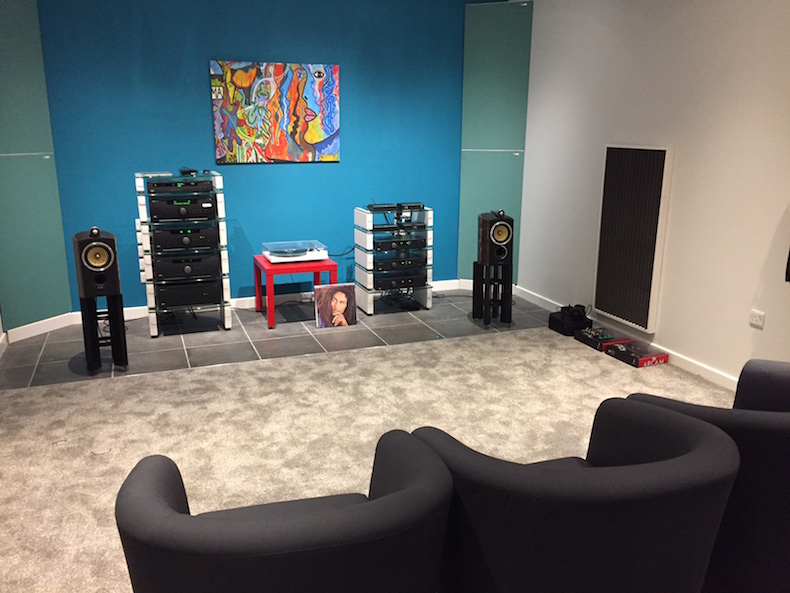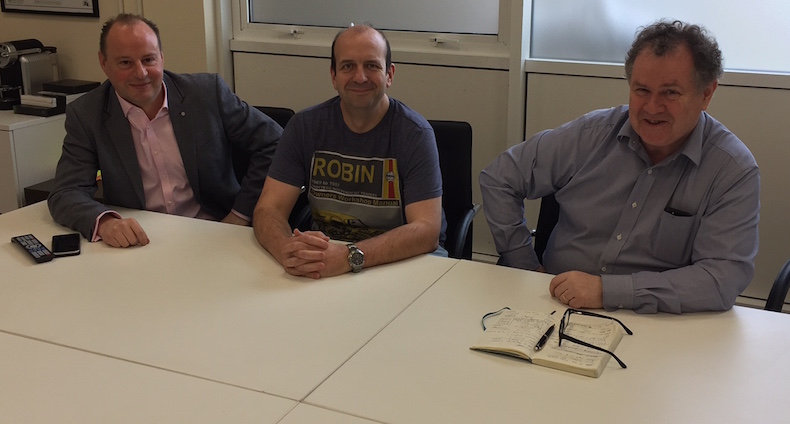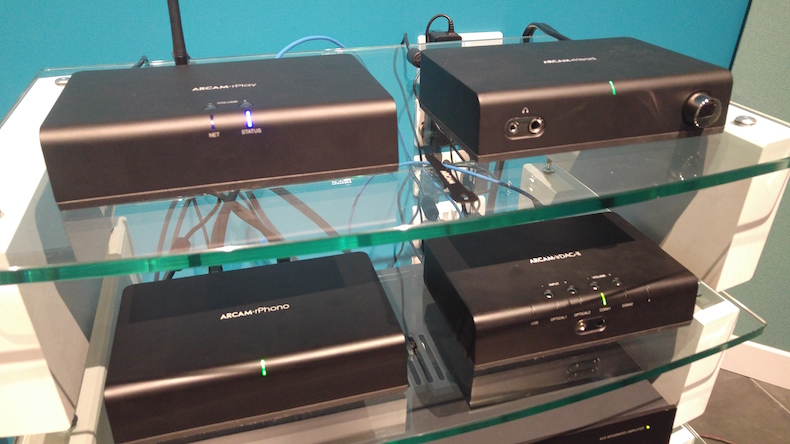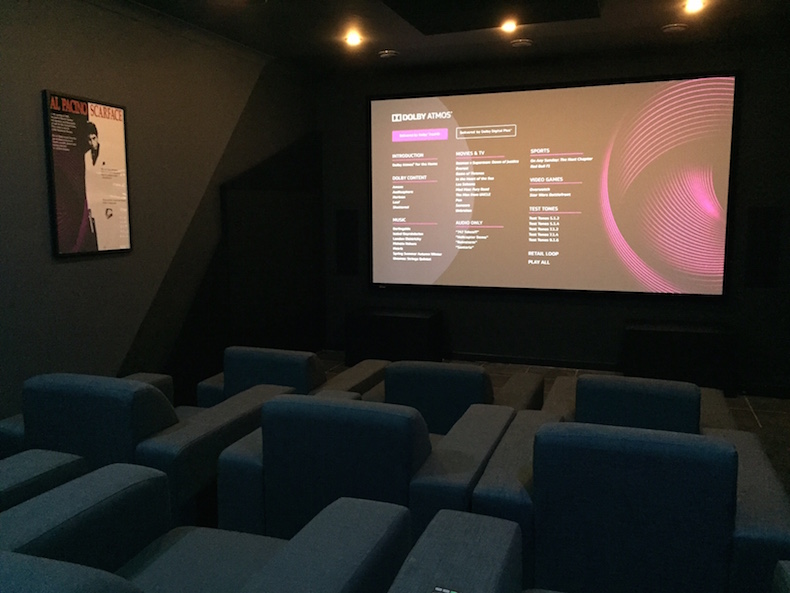Behind the scenes at Arcam HQ
Last year Arcam celebrated 40 years in the hi-fi and home cinema business, so we decided to pay a visit to the company’s Cambridge HQ to check out its brand-new listening rooms and find out what it has in store for the next 40 years.

Charlie Brennan, Arcam’s managing director, is a man on a mission. In an age of MP3s and streaming, he’s determined to get people passionate again about how they listen to music and movies. Not for him a cheap pair of in-ear headphones and low-res music, or a lowly soundbar. Oh no.
Interview him on the subject of the hi-fi industry, and where it’s going wrong, and he’ll wax lyrical for hours. Having worked at Tannoy, Linn and now Arcam, he’s well placed to understand the transformation the business is going through.
Of course Arcam itself has not been immune from the challenges facing the consumer electronics industry. It's been a while since it has manufactured in the UK, the old Waterbeach factory nearby having closed down some time ago. Since it moved to its new HQ six years ago (a building it shares with a number of other companies), most production is based in China and north America (for its higher end models). Arcam became a wholly-owned subsidiary of Jam Industries in Montreal in 2012.
The UK office is now primarily a sales and design/engineering base, with Arcam's co-founder John Dawson retained as a consultant - his engineering skills are still key to many of the company's projects.
Despite the challenges of a tough market, Arcam's MD remains undeterred. “Training is essential, we have to get the dealers as passionate about the business as we are,” explains Charlie. “That’s why we are setting up 30 centres of cinematic excellence across the UK. The quality of sound in commercial cinemas can vary enormously. And yet a director like Danny Boyle will take enormous care with the soundtracks in his films.
“Games developers spend a fortune on their audio tracks too, but then they get mixed down and played through a soundbar or TV speakers.”
Too often, he feels, the dealer experience for the customer is not what it should be.
Get the What Hi-Fi? Newsletter
The latest hi-fi, home cinema and tech news, reviews, buying advice and deals, direct to your inbox.

Putting his money where his mouth is, Arcam’s MD has recently invested in two brand-new listening rooms created within the firm’s Cambridge HQ, designed as a showcase for the company’s UK and international dealers. Arcam also has a complete Dolby Atmos rig it can take on the road to shows such as ISE in Amsterdam and Bristol.
We’ve had a chance to see and hear the new listening rooms in action. There’s a conventional stereo hi-fi room, as you’d expect, and a home cinema room fully kitted out for Dolby Atmos with KEF THX in-wall and in-ceiling speakers, plus a pair of bespoke 18in subwoofers. Pictures are handled by a £10,000 Sony VPL-VW550ES 4K projector.
Amplification, naturally, comes from Arcam in the form of the AVR850 for the main speaker array and the P429 for the four height array speakers. The source is Arcam's UDP411 Blu-ray player.
MORE: Dolby Atmos - what is it? How can you get it?

Arcam’s product manager, Andy Moore, is the man who had the job of creating the new rooms from scratch. Spend just a few minutes with him and it’s obvious he's a guy who loves his job.
“We can turn a room into King’s College chapel and make it sound acoustically similar, because we know what the chapel actually sounds like,” says Andy. “No-one knows what a laser beam in space or a truck turning into a Transformer actually sounds like - that’s fake sound.
“Yet 80-90 per cent of the emotion in films comes from the soundtrack - think of the big orchestral pieces used in the soundtracks for films such as Gladiator and Star Wars. That’s why we focus on music first.”

To that end, Andy and the Arcam team have taken a music-first approach to the way they’ve developed their new listening rooms. “A lot of hi-fi systems struggle to reproduce the sound of a violin without it sounding bright. If you make a violin sound like a violin, or a piano sound like a piano, then the system will handle any Hollywood blockbuster with ease.”
It’s telling that one of the demo pieces Andy plays us is the choir of King’s College, Cambridge singing the Magnificat from the recording of Giovanni Gabrieli’s 1615 in Venice. We hear it in both standard stereo and Dolby Atmos, and it’s wonderful example of how Atmos can be used to great effect in recreating the atmosphere of King’s College chapel. Surround sound doesn’t just have to be about car chases and explosions.

This approach is evident in the way Arcam utilises new technology. It has adopted Class G amplification for some of its high-end products such as the FMJ A49 amp and Solo Music system despite it being “relatively expensive and, initially, hard to implement”. However, it says its Class G products are now much more stable and deliver better performance than Class A/B amps which "tend to have crossover distortion”.
Class G works a bit like a hybrid car by using two power supplies: the primary supply handles the majority of audio signals, but a second one kicks in when more power is required.

We're keen to get next to the latest addition to Arcam's rSeries range, which it started eight years ago. The Arcam rPlay, a £399 streamer and DAC that uses DTS Play-Fi technology, was introduced in January and was one of our Stars of CES 2017. Play-Fi has gained some traction in the US, but is perhaps less well known in the UK.
“Our amps have a life of 10-20 years, so we don’t want customers to have to throw them out if they want to upgrade,” explains Arcam’s technical director Nick Clarke. “With products like the rPlay, users can add functionality and connectivity to their existing kit.”

To that end, the rPlay brings AirPlay, Play-Fi, UPnP (universal plug and play) and hi-res, lossless multi-room streaming to any existing system. With built-in Spotify, Tidal, Qobuz and Deezer streaming services, and the promise of Amazon Alexa voice control to come, it’s a neat way to bring your existing hi-fi or AV system into the streaming age.
“We will integrate DTS Play-Fi into our core products in due course,” says Nick.
The other big development Arcam is keeping a keen eye on is next-gen aptX HD Bluetooth: “From what we’ve heard so far aptX HD is pretty impressive.” Expect to find it in some Arcam products in due course.

As for video, the view from Arcam is that “HDR is still in flux, and a lot of 4K material is massively compressed”. And on the subject of the next version of HDMI (2.1), announced at CES in January, Nick reckons “it doesn’t help us or the consumer. There’s no full specification yet, jumping from 18GHz to 48GHz is a whole other world and it will only work with cables no more than two metres long.
“A final spec is due at the end of March, but we won’t see the silicon until the end of this year. Yes, HDMI 2.1 can in theory handle 8K video, and it will have an Enhanced Audio Return Channel (EARC) that is capable of handling full lossless multi-channel sound. But HDMI certification can cost us around $80,000 so it’s expensive to implement.”
We finish up our visit by returning to good old stereo, with a wonderful vinyl recording of Ryan Adams Live at Carnegie Hall, played through an Arcam FMJ A39 Class G amplifier, Arcam rPhono and B&W 805 Maserati Edition speakers. Who says stereo is dead?
MORE: Come and hear Dolby Atmos in action on our stand at the Bristol Sound and Vision Show this weekend
Andy is Global Brand Director of What Hi-Fi? and has been a technology journalist for 30 years. During that time he has covered everything from VHS and Betamax, MiniDisc and DCC to CDi, Laserdisc and 3D TV, and any number of other formats that have come and gone. He loves nothing better than a good old format war. Andy edited several hi-fi and home cinema magazines before relaunching whathifi.com in 2008 and helping turn it into the global success it is today. When not listening to music or watching TV, he spends far too much of his time reading about cars he can't afford to buy.

